Discover Toronto's history as told through its plaques
2004 - Now in our 15th Year - 2019
To see what's new on this site, you can visit the Home Page
Looking at this page on a smartphone?
For best viewing, hold your phone in Landscape mode (Horizontal)
Irish Immigrants and the Fever Sheds 1847
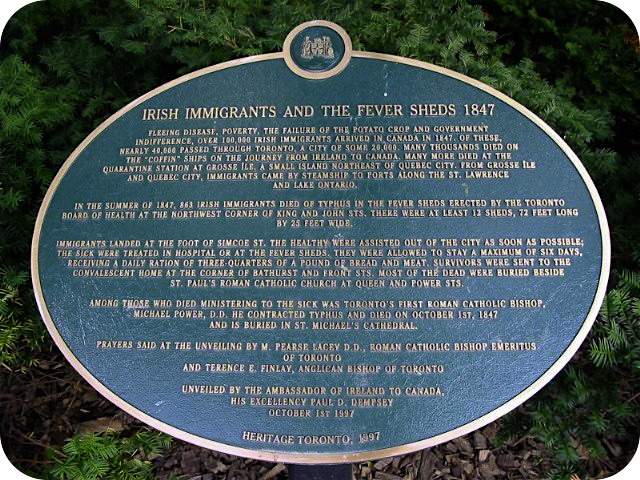
Photo by Alan L Brown - Posted September, 2006
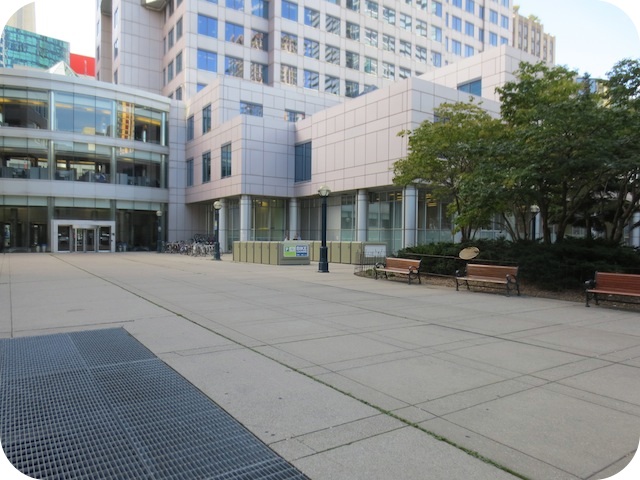
Photo by Alan L Brown - Posted September, 2013
In a nice patch of vegetation in Toronto's downtown core on the south side of King Street West across from Duncan Street, is this 1997 Heritage Toronto plaque. It tells the story of the arrival in Toronto in 1847 of nearly 40,000 impoverished Irish immigrants. As well, in Ireland Park on the waterfront just east of the foot of Bathurst Street are five statues representing the state of the immigrants as they came ashore. Photos of these are farther down the page. Here's what the Heritage Toronto plaque says:
Coordinates: 43.646755 -79.388022 |
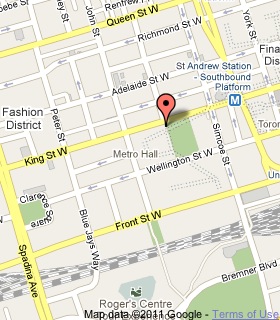 |
Fleeing disease, poverty, the failure of the potato crop and government indifference, over 100,000 Irish immigrants arrived in Canada in 1847. Of these, nearly 40,000 passed through Toronto, a city of some 20,000. Many thousands died on the "coffin" ships on the journey from Ireland to Canada. Many more died at the quarantine station at Grosse Île, a small island northeast of Quebec City. From Grosse Île and Quebec City, immigrants came by steamship to ports along the St. Lawrence and Lake Ontario.
In the summer of 1847, 863 Irish immigrants died of typhus in the fever sheds erected by the Toronto Board of Health at the northwest corner of King and John Sts. There were at least 12 sheds, 22 metres long by 7.5 metres wide.
Immigrants landed at the foot of Simcoe Street. The healthy were assisted out of the city as soon as possible; the sick were treated in hospital or at the Fever Sheds. They were allowed to stay a maximum of six days, receiving a daily ration of three-quarters of a pound of bread and meat. Survivors were sent to the Convalescent Home at the corner of Bathurst and Front Sts. Most of the dead were buried beside St. Paul's Roman Catholic Church at Queen and Power Sts.
Among those who died ministering to the sick was Toronto's first Roman Catholic Bishop, the Right Reverend Michael Power, D.D. He contracted typhus and died on October 1st, 1847 and is buried in St. Michael's Cathedral.
Coordinates: 43.634638 -79.39596 |
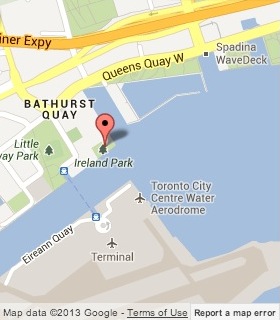 |
In Ireland Park on the waterfront just east of the foot of Bathurst Street are five statues representing the state of the immigrants as they came ashore:
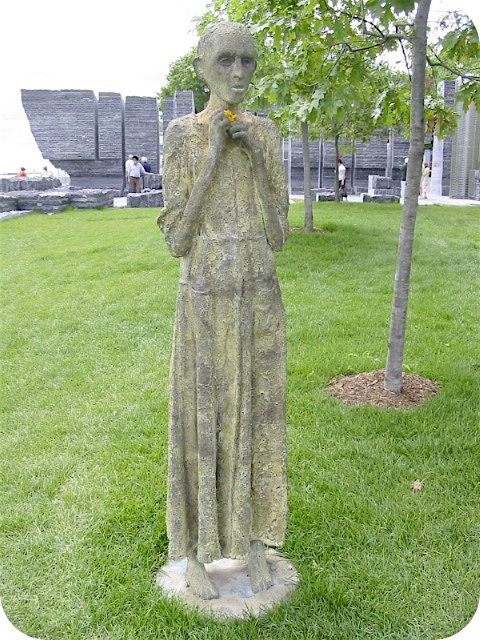
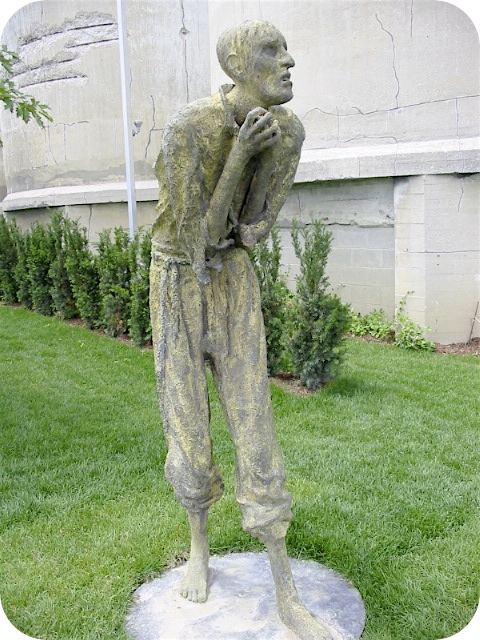
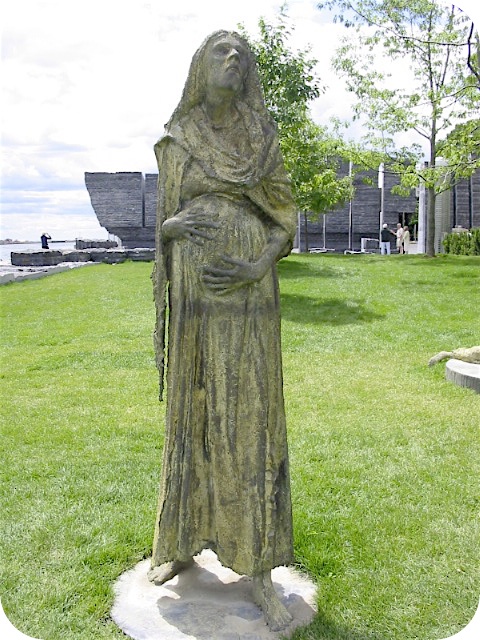
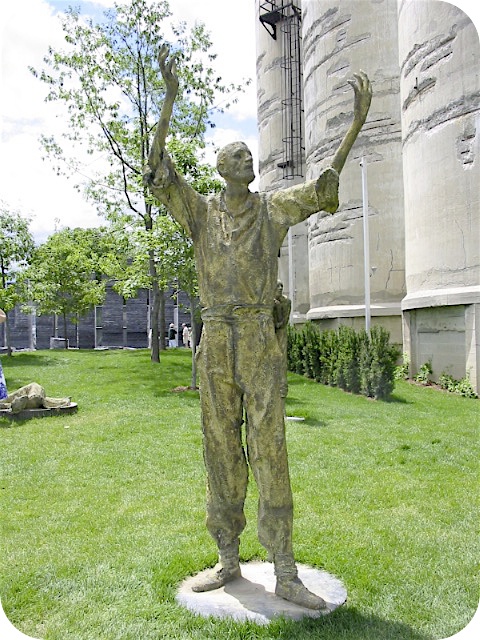
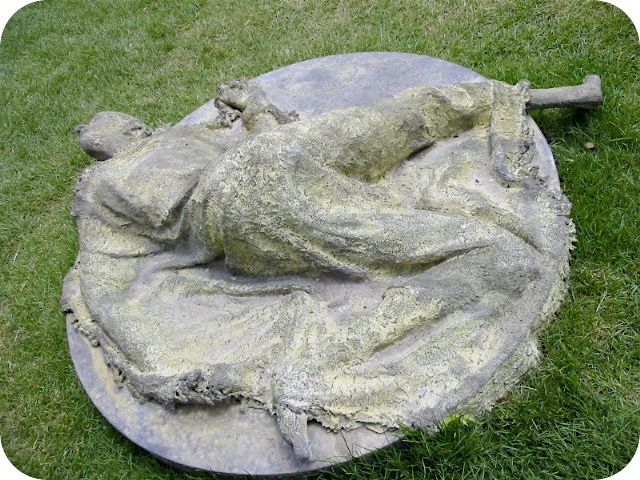
Coordinates: 43.634638 -79.395962 |
 |
Related webpages
Ireland Park
Irish immigrants
Grosse Île
typhus
St. Paul's Roman Catholic Church
Right Reverend Michael Power
Related Toronto plaques
Toronto Irish Famine Memorial
St. Michael's Cathedral
St. Paul's Basilica
Related Ontario plaque
Typhus Epidemic 1847
More
Disaster
Here are the visitors' comments for this page.
> Posted August 15, 2012
I've always wondered about the grave yard at St Paul's Catholic church. Is it still there, and are the Irish buried under the Playground of the School? Why isn't there a plaque or something to let people know? It would be respectable to have something there to commemorate the Irish. After all they are a strong people and have put up with a lot of prejudice throughout the early years. I just think that there should be more information on that site. MTM
> Posted December 8, 2011
In answer to questions of Nov. 21, there is a list of names on the Irish Famine Memorial. See them at irelandparkfoundation.com/.
Adding names to the Ireland Park memorial is an ongoing project. A list of the current names can be found at: http://irelandparkfoundation.com/famine-memorial/engraved-names/.
Contact St. Paul's Basilica for a list of interments. The cemetery was active from 1822 to 1857. -Wayne
> Posted November 21, 2011
This a valuable site with much information and pictures. Finding this site urges me to ask the following questions. Is there a list of burials in St. Paul's cemetery and of the names on the memorial in Ireland Park?
Kay, Buffalo, NY
> Posted February 10, 2011
I am very surprised at Mr Eales posting and feel that perhaps he should take his own advice and "verify the statements" he himself is making on public sites. Land clearances are well documented and indeed so is the inaction of the government at the time. To suggest that "Republicans" are spouting misleading/inaccurate rhetoric about this period, is a rather jaded and uneducated response to a topic that Mr. Eales has clearly no real knowledge on.
> Posted July 10, 2009
The numbers speak for themselves.
> Posted June 26, 2009
Dear Sir I object to the wording on the commemorative plaque stating "due to government indifference". Sir Robert Peel lost a non confidence vote in an attempt to change the "Corn Laws" in an attempt to lower or control the cost of grains in order to alleviate the COMING blight that had started to ravish europe. The government of Lord John Russel reacted too late for many Irish. The British Government spent about 8 million pounds on relief. In todays funds that amounts to over 685,000,000 pounds. Private charities raised over 200,000 pounds, most of which went to Ireland with the remainder going to Scotland. According to the historian Jeff Chapman, "by the 1840's almost half or the Irish population was entirely dependent on the potato". The population almost doubled between 1780 and 1847. JUST 67 YEARS. The age of marriage dropped considerably as potatoes were so easy to cultivate and a family could survive on a very small plot of land. This is the main reason so many poor Irish died from malnutrition and disease. There are two ways to tell any story. If you were to investigate "Scottish coffin ships" you will find similar numbers and conditions as the Irish ships. The difference is that in Scotland the landlords were paying for passage to Canada to give the scots a chance to survive, if they had not sailed they would more than likely have starved. The Irish version is that the landlords were just trying to throw them of the land. I am sure that in some instances this was true, I am also sure that Republicans told the story to their advantage. In telling Toronto,s history you have a responsibility to accuracy and to verify the statements made on public plaques.
Frank Brennan Eales
Toronto
Here's where you can send me a comment for this page.
Note: Your email address will be posted at the end of your comment so others can respond to you unless you request otherwise.
Note: Comments are moderated. Yours will appear on this page within 24 hours (usually much sooner).
Note: As soon as I have posted your comment, a reply to your email will be sent informing you.
To send me your comment, click [email protected].
Thanks
Webmaster
Note: If you wish to send me a personal email, click here.